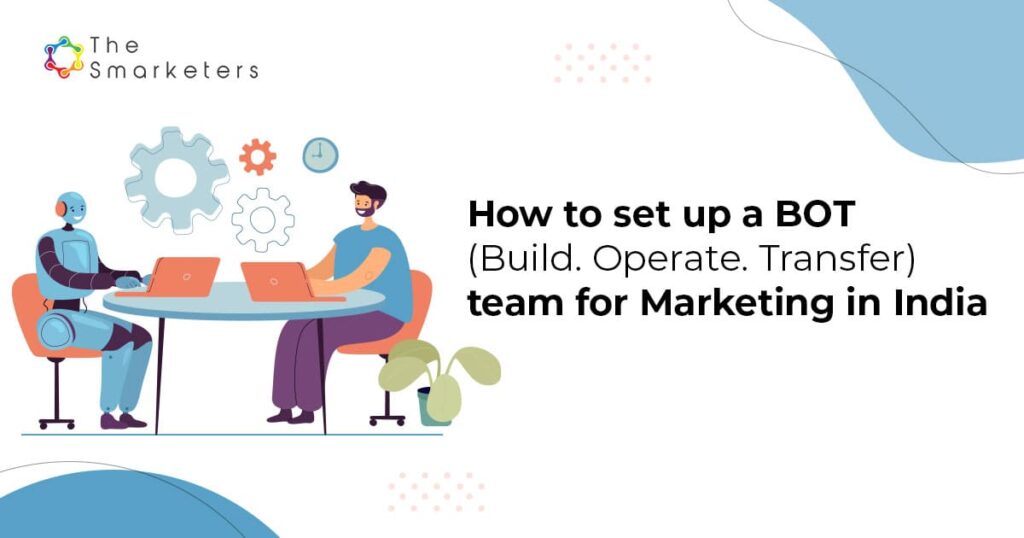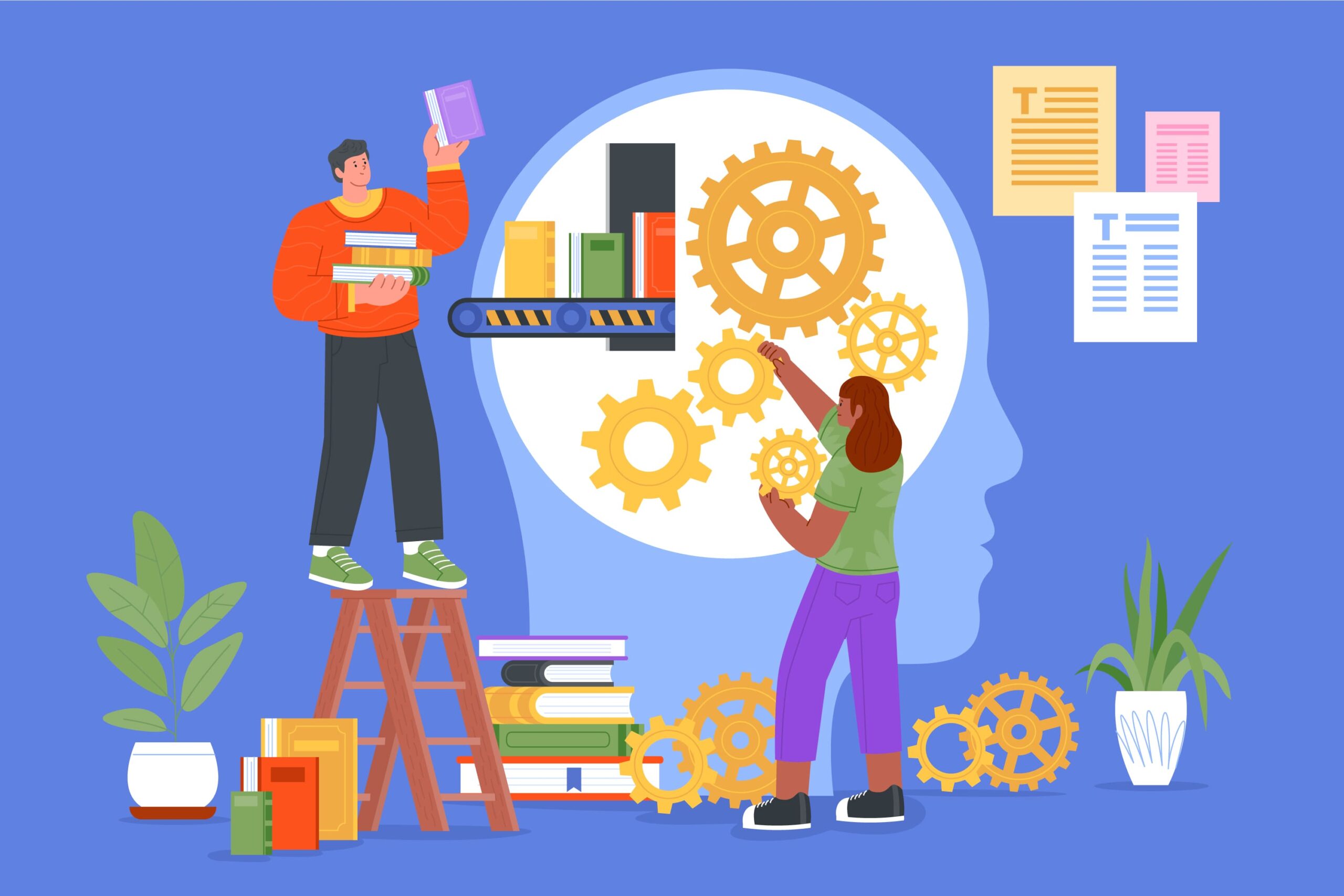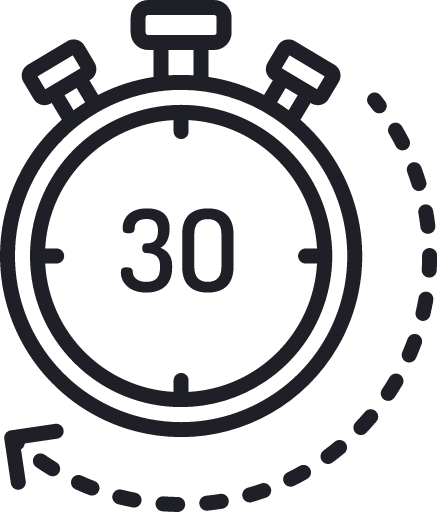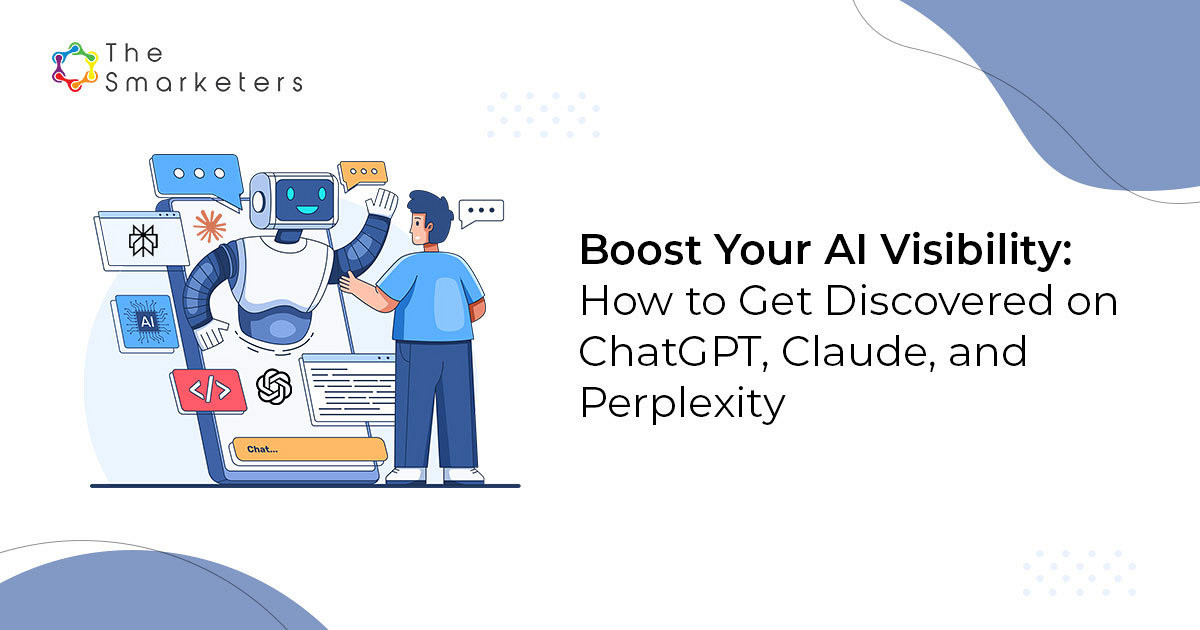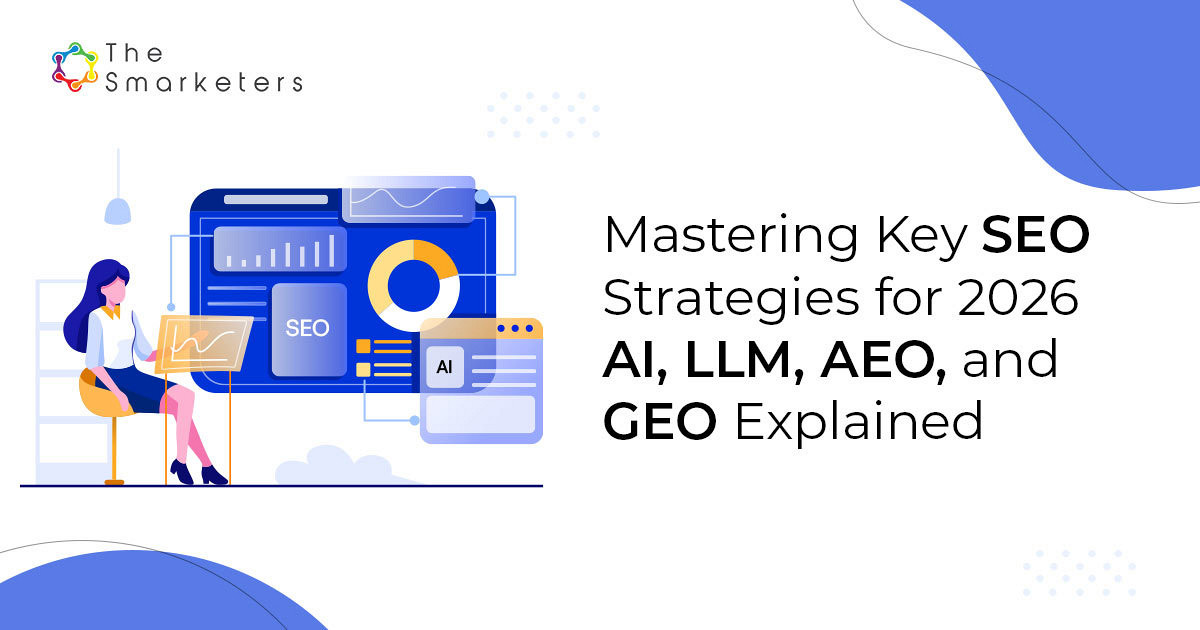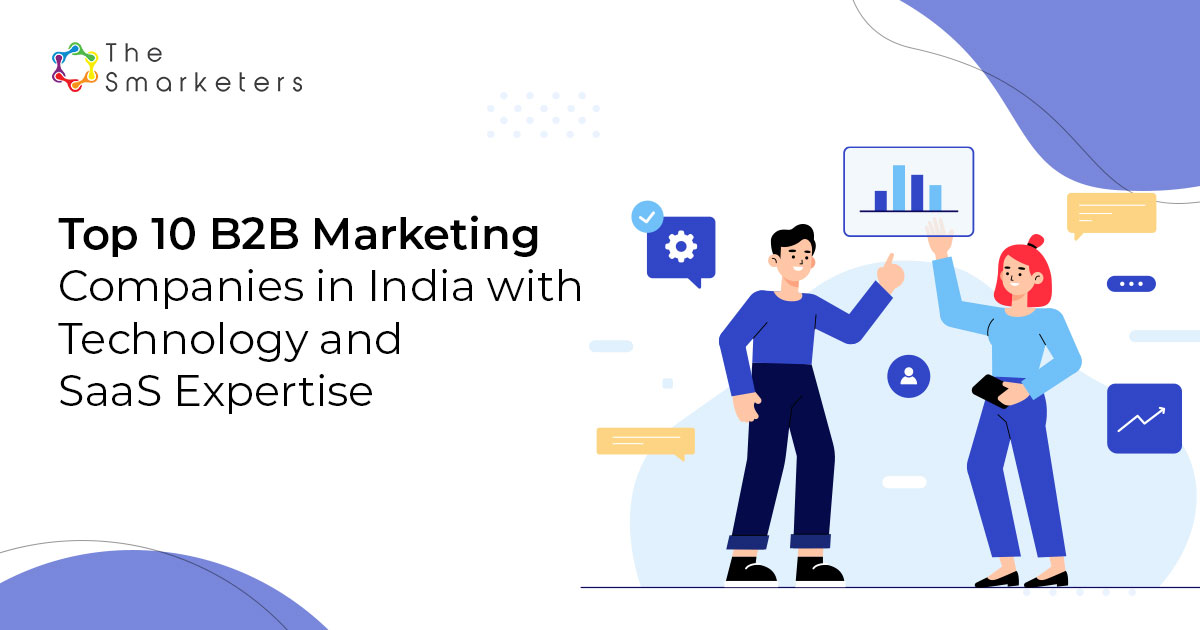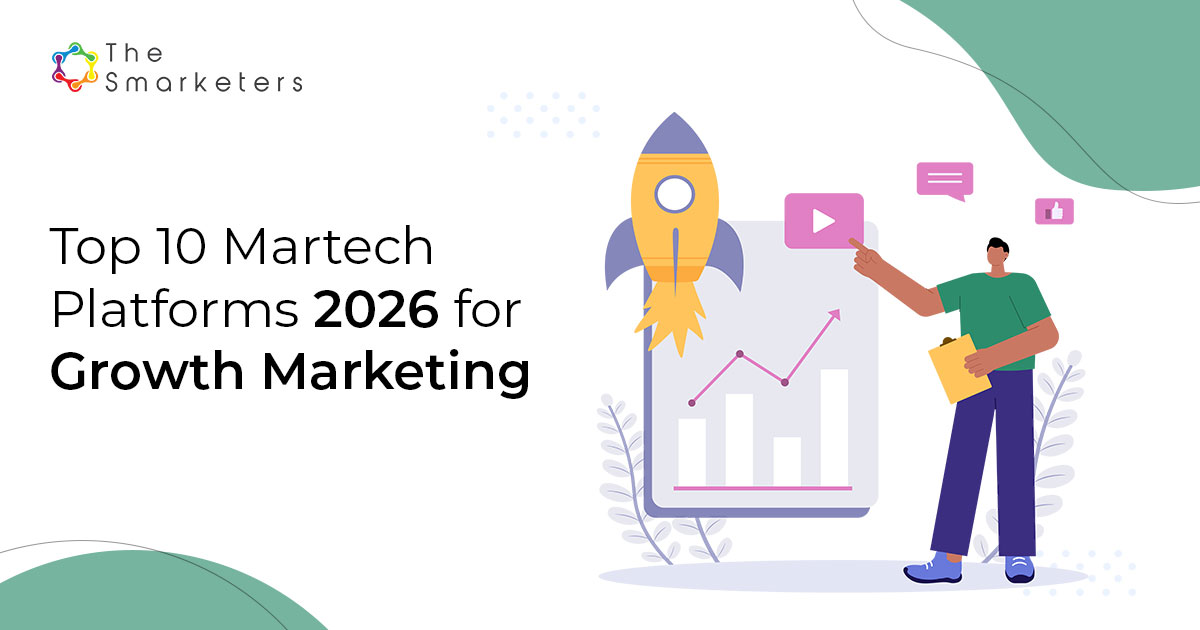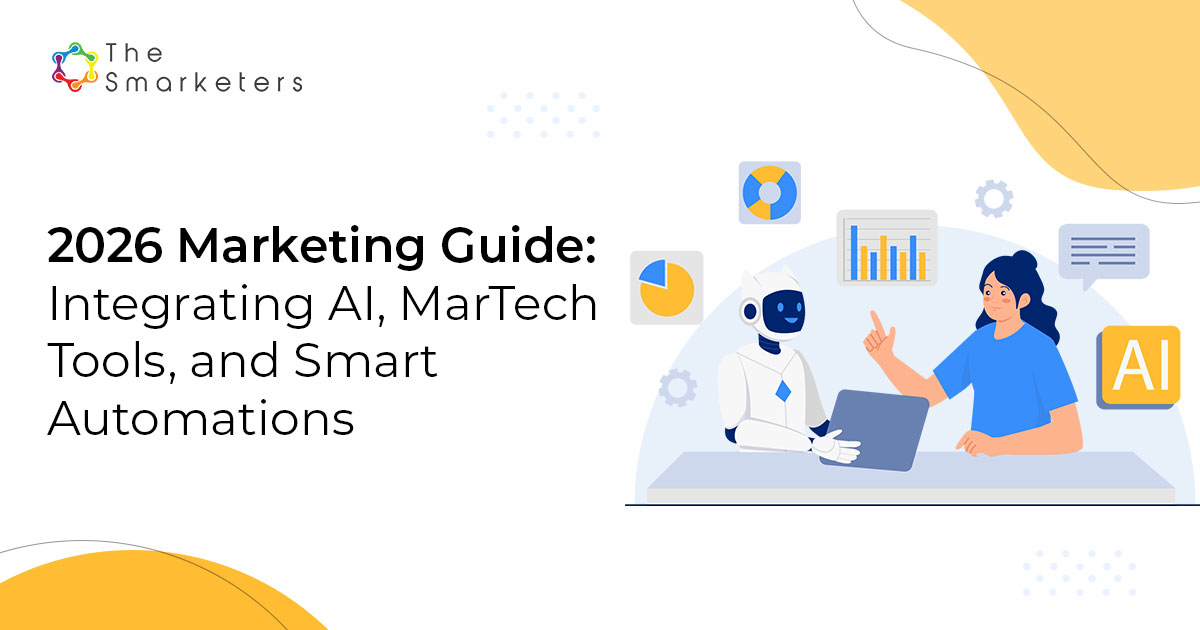Table of Contents
- Understanding BOT Teams for Marketing
- Assessing Your Marketing Needs in India
- Building Your BOT Team
- Operating the BOT Team Effectively
- Transferring Knowledge and Capabilities
- Overcoming Challenges in BOT Team Management
- Measuring Success and Optimizing Performance
- Why choose The Smarketers for your BOT team set up
Did you know that 70% of Fortune 500 companies are leveraging BOT (Build, Operate, Transfer) models for their global operations? In India alone, over 1,500 Global Capability Centers (GCCs) are thriving, with a significant portion dedicated to marketing functions. The BOT model isn’t just a trend; it’s revolutionizing how businesses approach their marketing strategies, especially in dynamic markets like India.
Are you struggling to scale your marketing efforts in the Indian market? Maybe you’re overwhelmed by the complexity of building a team from scratch or concerned about the costs involved. Here’s the good news: setting up a BOT team for marketing in India could be the game-changer you’ve been looking for. With its unique blend of cost-effectiveness, access to specialized talent, and potential for long-term capability building, a BOT model might just be your ticket to marketing success in one of the world’s fastest-growing economies.
In this comprehensive guide, we’ll walk you through every step of setting up a BOT team for marketing in India. From understanding the basics of BOT teams to measuring success and optimizing performance, we’ve got you covered. So, are you ready to transform your marketing approach and tap into the immense potential of the Indian market? Let’s dive in and explore how you can build, operate, and transfer a high-performing marketing team that drives real results for your business.
Understanding BOT Teams for Marketing
Definition and benefits of BOT teams
BOT teams, or Build-Operate-Transfer teams, are an innovative approach to outsourcing marketing operations. This model allows you to create a dedicated offshore team that works exclusively for your company while being managed by a third-party service provider. As you explore the world of BOT teams for marketing in India, it’s essential to understand their definition and the numerous benefits they offer.
A BOT team is a strategic partnership where you:
- Build: Collaborate with a service provider to recruit and train a team tailored to your needs
- Operate: Allow the service provider to manage the team while they work on your projects
- Transfer: Eventually transfer the team’s operations and management to your company
Benefits of BOT teams for marketing include:
- Cost-effectiveness
- Access to specialized talent
- Scalability
- Reduced hiring and training time
- Flexibility in team composition
- Improved focus on core business functions
Let’s dive deeper into these benefits:
Cost-effectiveness
One of the primary advantages of setting up a BOT team for marketing in India is the significant cost savings. By leveraging the lower cost of living and competitive salaries in India, you can build a high-quality marketing team at a fraction of the cost compared to hiring in-house staff in your home country.
| Expense Category | In-house Team | BOT Team in India |
|---|---|---|
| Salaries | High | 40-60% lower |
| Office Space | Expensive | Included in service |
| Equipment | Your cost | Provided by partner |
| Training | Your resource | Shared responsibility |
| Benefits | Full package | Managed by partner |
As you can see, the cost savings extend beyond just salaries. You’ll also save on overhead expenses, equipment, and even training costs.
Access to specialized talent
India boasts a vast pool of highly skilled marketing professionals with expertise in various digital marketing disciplines. By setting up a BOT team in India, you gain access to:
- SEO specialists
- Content marketers
- Social media experts
- PPC campaign managers
- Email marketing professionals
- Marketing analysts
This diverse talent pool allows you to build a well-rounded marketing team with specialized skills that might be challenging to find or afford in your local market.
Scalability
As your marketing needs evolve, a BOT team offers unparalleled scalability. You can easily:
- Add new team members with specific skill sets
- Expand into new marketing channels or strategies
- Increase or decrease team size based on project requirements
This flexibility ensures that your marketing operations can quickly adapt to changing business needs without the complexities of traditional hiring and firing processes.
Reduced hiring and training time
Setting up a BOT team significantly reduces the time and resources typically spent on recruitment and training. Your service provider handles:
- Sourcing candidates
- Initial screening
- Skill assessment
- Onboarding
- Basic training
This streamlined process allows you to have a fully functional marketing team up and running in a fraction of the time it would take to build an in-house team from scratch.
Flexibility in team composition
With a BOT team, you have the freedom to experiment with different team structures and skill combinations. You can:
- Bring in specialists for short-term projects
- Rotate team members based on project needs
- Adjust the team composition as your marketing strategy evolves
This flexibility enables you to optimize your marketing efforts without the constraints of traditional employment structures.
Improved focus on core business functions
By outsourcing your marketing operations to a BOT team in India, you free up valuable time and resources to focus on your core business functions. This allows you to:
- Concentrate on strategic decision-making
- Improve product development
- Enhance customer relationships
- Drive overall business growth
Now that you understand the definition and benefits of BOT teams for marketing, let’s explore how this model specifically advantages marketing operations in India.
Advantages for marketing operations in India
India offers unique advantages for setting up a BOT team for marketing operations. These advantages stem from the country’s thriving digital ecosystem, cultural diversity, and robust education system.
Access to a large, English-speaking workforce
India boasts one of the world’s largest English-speaking populations, making it an ideal destination for marketing outsourcing. This linguistic advantage ensures:
- Smooth communication with your team
- High-quality content creation in English
- Effective collaboration on global marketing campaigns
Cultural diversity and global perspective
India’s cultural diversity provides a unique advantage for marketing operations. Your BOT team in India can offer:
- Insights into various cultural nuances
- Ability to create culturally sensitive marketing content
- Experience in adapting marketing strategies for different regions
This global perspective can be invaluable when developing marketing campaigns that resonate with diverse audiences worldwide.
Time zone advantage
India’s time zone can work to your advantage, especially if your company is based in the Western hemisphere. This allows for:
- Extended working hours
- Overlap for real-time collaboration
- 24/7 marketing operations
For example, if you’re based in the United States, your Indian BOT team can work on projects while you sleep, ensuring continuous progress and faster turnaround times.
Cost-effective digital infrastructure
India has made significant strides in developing its digital infrastructure. This means your BOT team will have access to:
- High-speed internet connectivity
- Modern office spaces
- Advanced marketing tools and technologies
All these facilities come at a fraction of the cost compared to many Western countries, further enhancing the cost-effectiveness of your marketing operations.
Familiarity with emerging markets
India itself is a rapidly growing market, and marketers based here often have experience working with other emerging markets. This expertise can be valuable if you’re looking to:
- Expand into new international markets
- Develop strategies for reaching diverse consumer groups
- Understand the dynamics of fast-growing economies
Now that you’re aware of the advantages of setting up a BOT team for marketing in India, let’s explore the key components that make such a team successful.
Key components of a successful BOT team
To ensure the success of your BOT team for marketing in India, you need to focus on several critical components:
- Clear communication channels
- Defined roles and responsibilities
- Robust project management systems
- Regular performance evaluation
- Continuous learning and development
- Cultural alignment
- Data security and confidentiality measures
Let’s delve into each of these components:
Clear communication channels
Effective communication is the backbone of any successful remote team. For your BOT team, establish:
- Regular video conferences
- Instant messaging platforms
- Collaborative project management tools
- Clear reporting structures
Ensure that your team has the necessary technology and protocols in place to maintain seamless communication despite the geographical distance.
Defined roles and responsibilities
Clarity in roles and responsibilities is crucial for a BOT team. Make sure to:
- Create detailed job descriptions for each role
- Establish clear lines of authority
- Define key performance indicators (KPIs) for each position
- Regularly review and update role definitions as needed
This clarity helps prevent overlaps, ensures accountability, and promotes efficiency within the team.
Robust project management systems
Implementing a robust project management system is essential for coordinating tasks and tracking progress. Consider using tools that offer:
- Task assignment and tracking
- Time management features
- File sharing and collaboration capabilities
- Reporting and analytics
Popular options include Asana, Trello, or Monday.com, but choose a system that best fits your team’s needs and working style.
Regular performance evaluation
To maintain high standards and drive continuous improvement, implement a system for regular performance evaluations. This should include:
- Weekly or bi-weekly check-ins
- Monthly performance reviews
- Quarterly goal-setting sessions
- Annual comprehensive evaluations
Use these evaluations to provide constructive feedback, recognize achievements, and identify areas for improvement.
Continuous learning and development
Investing in your BOT team’s skills and knowledge is crucial for long-term success. Encourage continuous learning by:
- Providing access to online courses and certifications
- Organizing regular training sessions
- Facilitating knowledge sharing within the team
- Sponsoring attendance at relevant marketing conferences
This commitment to learning ensures your team stays updated with the latest marketing trends and technologies.
Cultural alignment
While leveraging India’s cultural diversity is an advantage, it’s also important to ensure your BOT team aligns with your company’s culture. Achieve this by:
- Clearly communicating your company’s values and mission
- Involving the team in company-wide events and initiatives
- Encouraging cross-cultural exchange and understanding
- Providing cultural sensitivity training when necessary
A strong cultural alignment fosters better collaboration and a sense of belonging among team members.
Data security and confidentiality measures
Given the sensitive nature of marketing data, implementing robust security measures is crucial. Ensure your BOT team adheres to:
- Strict data protection protocols
- Non-disclosure agreements
- Regular security audits
- Secure file sharing and storage systems
By prioritizing data security, you build trust and protect your company’s valuable information.
With these key components in place, your BOT team for marketing in India will be well-positioned for success. As you move forward with setting up your team, keep these elements in mind to create a high-performing, efficient, and valuable extension of your marketing operations.
Assessing Your Marketing Needs in India
Identifying target audience and market segments
Now that you understand the concept of BOT teams for marketing, it’s crucial to assess your specific marketing needs in India. The first step in this process is identifying your target audience and market segments. This foundational knowledge will guide all your future marketing efforts and help you tailor your BOT team structure accordingly.
When identifying your target audience in India, consider the following factors:
- Demographics: Age, gender, income level, education, occupation
- Psychographics: Lifestyle, values, interests, attitudes
- Geographic location: Urban, rural, specific regions or cities
- Behavioral patterns: Purchasing habits, brand loyalty, online activity
To effectively segment the Indian market, you can use various approaches:
| Segmentation Approach | Description | Example |
|---|---|---|
| Geographic | Dividing the market based on location | North India vs. South India |
| Demographic | Segmenting by population characteristics | Young professionals in metro cities |
| Psychographic | Grouping based on lifestyle and personality traits | Eco-conscious consumers |
| Behavioral | Categorizing by consumer actions and decisions | Frequent online shoppers |
Remember, India is a diverse country with numerous languages, cultures, and economic disparities. Your target audience and market segments may vary significantly across different regions.
Evaluating current marketing strategies and gaps
Once you’ve identified your target audience and market segments, it’s time to evaluate your current marketing strategies and identify any gaps. This assessment will help you determine where a BOT team can add the most value to your marketing efforts in India.
To evaluate your current marketing strategies:
- Conduct a SWOT analysis (Strengths, Weaknesses, Opportunities, Threats)
- Review your marketing channels and their performance
- Analyze your content strategy and its effectiveness
- Assess your brand positioning in the Indian market
- Examine your competitor’s strategies and market share
When identifying gaps, consider:
- Are you effectively reaching your target audience?
- Is your messaging resonating with the Indian market?
- Are you utilizing the right marketing channels for India?
- Do you have sufficient local market knowledge and cultural understanding?
- Are there any language barriers in your current marketing efforts?
By thoroughly evaluating your current strategies and identifying gaps, you’ll be better equipped to determine which areas require additional support from a BOT team.
Determining specific marketing functions for outsourcing
Based on your evaluation, you can now determine which specific marketing functions would benefit most from outsourcing to a BOT team in India. This decision should align with your overall marketing goals and address the gaps you’ve identified.
Some marketing functions commonly outsourced to BOT teams in India include:
- Content creation and management
- Social media marketing
- Search engine optimization (SEO)
- Pay-per-click (PPC) advertising
- Email marketing
- Market research and analysis
- Graphic design and video production
- Marketing automation
- Customer relationship management (CRM)
- Analytics and reporting
When deciding which functions to outsource, consider:
- Your in-house capabilities and expertise
- The cost-effectiveness of outsourcing vs. in-house execution
- The level of local market knowledge required for each function
- The scalability needs of your marketing efforts in India
- The potential for knowledge transfer and long-term capability building
It’s important to strike a balance between outsourcing and maintaining control over core strategic functions. Your BOT team should complement and enhance your existing marketing capabilities, not replace them entirely.
Setting clear goals and KPIs for the BOT team
To ensure the success of your BOT team, you need to set clear goals and Key Performance Indicators (KPIs). These metrics will help you measure the team’s performance and align their efforts with your overall marketing objectives in India.
When setting goals for your BOT team, use the SMART framework:
- Specific: Clearly define what you want to achieve
- Measurable: Ensure you can quantify and track progress
- Achievable: Set realistic targets based on resources and constraints
- Relevant: Align goals with your overall marketing strategy
- Time-bound: Set deadlines for achieving each goal
Some examples of SMART goals for a BOT marketing team in India could be:
- Increase website traffic from Indian visitors by 30% within six months
- Achieve a 15% conversion rate on lead generation campaigns by the end of the year
- Improve social media engagement rates by 25% across all platforms in three months
- Rank in the top 3 search results for five key industry terms in India within nine months
To track progress towards these goals, establish relevant KPIs. Here are some KPIs you might consider for different marketing functions:
| Marketing Function | Relevant KPIs |
|---|---|
| Content Marketing | Page views, Time on page, Social shares, Backlinks |
| Social Media Marketing | Followers growth, Engagement rate, Click-through rate |
| SEO | Organic traffic, Keyword rankings, Domain authority |
| PPC Advertising | Click-through rate, Conversion rate, Cost per acquisition |
| Email Marketing | Open rate, Click-through rate, Conversion rate |
Remember to regularly review and adjust your goals and KPIs as your marketing needs evolve and your BOT team becomes more integrated into your operations.
By thoroughly assessing your marketing needs in India, you’ll be well-prepared to build an effective BOT team that can drive results and contribute to your long-term success in the Indian market. With a clear understanding of your target audience, current strategies, outsourcing needs, and performance metrics, you’re now ready to move on to the next step: building your BOT team. This process will involve selecting the right partner, defining team roles and responsibilities, and establishing effective communication channels to ensure seamless collaboration between your in-house team and the BOT team in India.
Building Your BOT Team
A. Selecting the right outsourcing partner in India
When building your BOT team for marketing in India, selecting the right outsourcing partner is crucial. This decision will significantly impact the success of your marketing efforts and the overall effectiveness of your BOT model. Here are key factors to consider when choosing an outsourcing partner:
- Industry expertise and experience
- Track record and client testimonials
- Infrastructure and technology capabilities
- Cultural compatibility
- Data security and compliance measures
Let’s delve deeper into each of these factors:
Industry expertise and experience
Look for an outsourcing partner with a proven track record in marketing, particularly in your industry. They should demonstrate:
- Deep understanding of digital marketing trends
- Familiarity with various marketing channels and technologies
- Experience working with international clients
- Knowledge of the Indian market and consumer behavior
To evaluate their expertise, you can:
- Request case studies relevant to your industry
- Ask for examples of successful marketing campaigns they’ve executed
- Inquire about their team’s qualifications and certifications
Track record and client testimonials
A reputable outsourcing partner should be able to provide:
- References from current and past clients
- Success stories and measurable results
- Transparency about their processes and methodologies
Don’t hesitate to reach out to their clients directly to get first-hand feedback on their experience working with the outsourcing partner.
Infrastructure and technology capabilities
Ensure that your potential partner has:
- State-of-the-art technology infrastructure
- Access to essential marketing tools and platforms
- Robust data analytics capabilities
- Scalable resources to accommodate your growing needs
Here’s a comparison of what to look for in terms of technology capabilities:
| Basic Capabilities | Advanced Capabilities |
|---|---|
| CRM systems | AI-powered marketing automation |
| Email marketing tools | Advanced analytics and reporting dashboards |
| Social media management platforms | Integrated martech stack |
| Content management systems | Proprietary marketing technologies |
| Project management software | Machine learning for predictive analytics |
Cultural compatibility
Working with a team in India requires cultural alignment. Look for a partner that:
- Understands and respects your company culture
- Has experience working with international clients
- Demonstrates good communication skills in English
- Shows adaptability to different work styles and expectations
Data security and compliance measures
Given the sensitive nature of marketing data, ensure your outsourcing partner:
- Adheres to international data protection standards (e.g., GDPR)
- Has robust cybersecurity measures in place
- Follows strict confidentiality protocols
- Is transparent about their data handling practices
By carefully evaluating these factors, you’ll be better positioned to select the right outsourcing partner in India for your BOT team.
B. Defining team structure and roles
Once you’ve chosen your outsourcing partner, the next step is to define your BOT team’s structure and roles. This is critical for ensuring clarity, efficiency, and accountability within your marketing operations.
Team structure
Your BOT team structure should align with your marketing objectives and the scale of your operations. A typical structure might include:
- Team Lead/Project Manager
- Digital Marketing Specialists
- Content Creators
- SEO Experts
- Social Media Managers
- Data Analysts
- Graphic Designers
Depending on your needs, you might also include roles such as:
- PPC Specialists
- Email Marketing Experts
- Marketing Automation Specialists
- Video Production Specialists
Role definition
Clearly defining each role is crucial for smooth operations. For each position, outline:
- Key responsibilities
- Required skills and qualifications
- Performance metrics
- Reporting structure
Here’s an example of how you might define the role of a Digital Marketing Specialist:
| Aspect | Description |
|---|---|
| Responsibilities | – Develop and implement digital marketing strategies<br>- Manage multiple marketing channels (social media, email, PPC)<br>- Analyze campaign performance and provide insights<br>- Collaborate with content creators and designers |
| Required skills | – Proficiency in digital marketing tools and platforms<br>- Strong analytical and problem-solving skills<br>- Excellent communication and teamwork abilities<br>- Up-to-date knowledge of digital marketing trends |
| Performance metrics | – Lead generation and conversion rates<br>- Engagement metrics across channels<br>- ROI on marketing campaigns<br>- Meeting project deadlines and quality standards |
| Reporting structure | Reports to Team Lead/Project Manager |
C. Recruiting skilled marketing professionals
With your team structure and roles defined, it’s time to recruit the right professionals for your BOT team. Here are some strategies to ensure you attract and select the best talent:
- Leverage your outsourcing partner’s network
- Use specialized job boards and professional networks
- Conduct thorough interviews and assessments
- Look for cultural fit and adaptability
- Consider a mix of experienced professionals and fresh talent
Leveraging your outsourcing partner’s network
Your outsourcing partner in India likely has an extensive network of marketing professionals. Utilize their expertise in:
- Identifying potential candidates
- Screening resumes and portfolios
- Conducting initial interviews
Using specialized job boards and professional networks
To cast a wider net, consider:
- Marketing-specific job boards in India
- LinkedIn and other professional networking sites
- Industry events and conferences for networking
Conducting thorough interviews and assessments
To ensure you’re selecting the right candidates:
- Conduct multi-stage interviews (phone screening, technical interview, culture fit interview)
- Use practical assessments or case studies to evaluate skills
- Check references thoroughly
Looking for cultural fit and adaptability
Given the nature of BOT teams, look for candidates who:
- Are comfortable working with international clients
- Show flexibility in their work approach
- Demonstrate strong communication skills
- Express enthusiasm for continuous learning
Considering a mix of experienced professionals and fresh talent
A balanced team often includes:
- Experienced professionals who bring industry knowledge and leadership
- Fresh graduates who bring new perspectives and up-to-date skills
D. Establishing communication channels and protocols
Effective communication is crucial for the success of your BOT team. Here’s how you can establish robust communication channels and protocols:
- Choose the right communication tools
- Set clear communication guidelines
- Establish regular check-ins and meetings
- Implement a feedback mechanism
- Create a knowledge sharing platform
Choosing the right communication tools
Select a mix of tools that facilitate:
- Real-time communication (e.g., Slack, Microsoft Teams)
- Video conferencing (e.g., Zoom, Google Meet)
- Project management (e.g., Trello, Asana)
- File sharing and collaboration (e.g., Google Drive, Dropbox)
Setting clear communication guidelines
Develop a communication policy that outlines:
- Preferred channels for different types of communication
- Response time expectations
- Meeting etiquette (e.g., camera on during video calls)
- Reporting structures and escalation procedures
Establishing regular check-ins and meetings
Implement a structured meeting schedule, such as:
- Daily stand-ups for quick updates
- Weekly team meetings for in-depth discussions
- Monthly performance reviews
- Quarterly strategy sessions
Implementing a feedback mechanism
Create a system for continuous feedback:
- Regular one-on-one meetings between team members and their supervisors
- Anonymous feedback channels for sensitive issues
- Peer-to-peer feedback opportunities
Creating a knowledge sharing platform
Set up a centralized platform (e.g., a company wiki or intranet) where team members can:
- Share best practices
- Document processes and procedures
- Access training materials and resources
E. Implementing necessary training programs
To ensure your BOT team performs at its best, implement comprehensive training programs:
- Onboarding training
- Skill-specific training
- Cross-functional training
- Soft skills development
- Continuous learning initiatives
Onboarding training
Develop a structured onboarding program that covers:
- Company culture and values
- Marketing objectives and strategies
- Tools and technologies used
- Processes and workflows
- Communication protocols
Skill-specific training
Provide targeted training for specific marketing skills:
- Digital marketing best practices
- SEO and SEM techniques
- Content marketing strategies
- Social media management
- Data analysis and reporting
Cross-functional training
Encourage team members to learn about other roles:
- Organize knowledge-sharing sessions
- Implement job shadowing opportunities
- Create cross-functional projects
Soft skills development
Focus on developing essential soft skills:
- Communication and presentation skills
- Time management and productivity
- Problem-solving and critical thinking
- Teamwork and collaboration
Continuous learning initiatives
Foster a culture of continuous learning:
- Provide access to online learning platforms (e.g., Coursera, LinkedIn Learning)
- Encourage participation in webinars and virtual conferences
- Set up a mentorship program within the team
By following these guidelines for building your BOT team, you’ll be well on your way to establishing a strong marketing presence in India. Remember, the key to success lies in careful planning, clear communication, and ongoing development of your team’s skills and capabilities. With the right approach, your BOT team can become a valuable asset in driving your marketing efforts forward.
Operating the BOT Team Effectively
Integrating the BOT team with in-house marketing efforts
Now that you’ve built your BOT team for marketing in India, it’s crucial to integrate them seamlessly with your existing in-house marketing efforts. This integration is key to maximizing the potential of your offshore marketing team and ensuring a cohesive marketing strategy.
To effectively integrate your BOT team, consider the following strategies:
- Establish clear communication channels
- Define roles and responsibilities
- Align goals and objectives
- Foster a collaborative culture
- Implement regular cross-team meetings
Let’s dive deeper into each of these strategies:
Clear Communication Channels
Setting up reliable and efficient communication channels is the foundation of successful integration. You should:
- Choose appropriate communication tools (e.g., Slack, Microsoft Teams, or Zoom)
- Establish communication protocols and response times
- Encourage open and transparent communication
- Address language barriers, if any, through language training or translation services
Defining Roles and Responsibilities
Clearly outlining the roles and responsibilities of both your in-house team and BOT team helps avoid confusion and duplication of efforts. Create a detailed organizational chart that includes:
- Specific job titles and descriptions
- Reporting structures
- Areas of expertise and specialization
- Collaborative touchpoints between in-house and BOT team members
Aligning Goals and Objectives
Ensure that your BOT team is working towards the same goals as your in-house team. To achieve this:
- Share your company’s overall marketing strategy and objectives
- Involve the BOT team in goal-setting sessions
- Create shared KPIs and metrics for measuring success
- Regularly review and adjust goals as needed
Fostering a Collaborative Culture
Building a collaborative culture between your in-house and BOT teams is essential for long-term success. Encourage collaboration by:
- Organizing virtual team-building activities
- Celebrating shared successes and milestones
- Promoting knowledge sharing and cross-training
- Recognizing and rewarding collaborative efforts
Regular Cross-Team Meetings
Schedule regular meetings between your in-house and BOT teams to maintain alignment and foster collaboration. These meetings can include:
- Weekly status updates
- Monthly strategy sessions
- Quarterly performance reviews
- Annual planning meetings
By implementing these strategies, you’ll create a unified marketing force that leverages the strengths of both your in-house and BOT teams.
Developing collaborative workflows and processes
With your BOT team integrated, it’s time to focus on developing collaborative workflows and processes that streamline your marketing efforts. Efficient workflows ensure that both your in-house and BOT teams work together seamlessly, maximizing productivity and achieving better results.
To develop effective collaborative workflows, consider the following steps:
- Map out existing processes
- Identify areas for improvement
- Design new workflows
- Implement and test
- Continuously refine and optimize
Let’s explore each of these steps in detail:
Mapping Existing Processes
Start by documenting your current marketing processes. This helps you identify inefficiencies and areas where the BOT team can add value. Create process maps that include:
- Task sequences
- Decision points
- Responsible team members
- Time frames for each task
Identifying Areas for Improvement
Analyze your existing processes to find opportunities for enhancement. Look for:
- Bottlenecks and delays
- Redundant tasks
- Manual processes that can be automated
- Gaps in skills or resources
Designing New Workflows
Based on your analysis, design new workflows that incorporate the BOT team and address identified issues. Consider:
- Task allocation between in-house and BOT teams
- Approval processes and decision-making authority
- Collaboration touchpoints
- Tools and technologies to support the workflows
Here’s an example of a collaborative content creation workflow:
| Stage | In-house Team | BOT Team |
|---|---|---|
| Planning | Define content strategy and topics | Research keywords and trends |
| Creation | Provide brand guidelines and tone of voice | Draft content and create visuals |
| Review | Review and provide feedback | Make revisions based on feedback |
| Approval | Final approval and sign-off | Incorporate final changes |
| Publishing | Schedule and publish content | Optimize for SEO and distribute |
| Analysis | Review performance metrics | Generate reports and insights |
Implementing and Testing
Once you’ve designed new workflows, it’s time to implement and test them. Follow these steps:
- Introduce the new workflows to both teams
- Provide training on new processes and tools
- Start with a pilot project or small-scale implementation
- Gather feedback from team members
- Monitor performance and identify any issues
Continuous Refinement and Optimization
Collaborative workflows should be dynamic and adaptable. Regularly review and optimize your processes by:
- Soliciting feedback from both in-house and BOT team members
- Analyzing performance metrics and KPIs
- Staying updated on new tools and technologies
- Conducting periodic workflow audits
By developing and refining collaborative workflows, you’ll create a more efficient and effective marketing operation that leverages the strengths of both your in-house and BOT teams.
Implementing project management tools and systems
To ensure smooth collaboration between your in-house and BOT teams, it’s essential to implement robust project management tools and systems. These tools will help you manage tasks, track progress, and maintain clear communication across both teams.
When selecting and implementing project management tools, consider the following factors:
- Ease of use and learning curve
- Integration with existing systems
- Collaboration features
- Reporting and analytics capabilities
- Scalability and customization options
Here are some popular project management tools and systems that can support your BOT team operations:
- Asana
- Trello
- Jira
- Monday.com
- Basecamp
Let’s explore how to effectively implement these tools:
Selecting the Right Tool
Choose a project management tool that aligns with your team’s needs and workflows. Consider factors such as:
- Team size and structure
- Types of projects and tasks
- Budget constraints
- Required features (e.g., time tracking, file sharing, task dependencies)
Setting Up the System
Once you’ve chosen a tool, set it up to reflect your team structure and workflows:
- Create projects and workspaces for different marketing initiatives
- Set up task lists and boards
- Define custom fields and tags for categorizing work
- Create templates for recurring tasks or projects
- Set up user accounts and permissions for all team members
Training and Onboarding
Ensure both your in-house and BOT teams are well-versed in using the chosen project management tool:
- Conduct training sessions for all team members
- Create documentation and user guides
- Assign project management tool champions to support others
- Encourage experimentation and learning
Establishing Best Practices
Develop guidelines for using the project management tool effectively:
- Task creation and assignment protocols
- Naming conventions for projects and tasks
- Due date and priority setting standards
- Communication norms within the tool
- Regular system maintenance and cleanup
Integrating with Other Tools
Maximize efficiency by integrating your project management tool with other systems:
- Time tracking software
- File storage and sharing platforms
- Communication tools (e.g., Slack, Microsoft Teams)
- Marketing automation platforms
- CRM systems
By implementing and effectively using project management tools, you’ll create a more organized and efficient workflow between your in-house and BOT teams.
Ensuring data security and confidentiality
When operating a BOT team for marketing in India, ensuring data security and confidentiality is paramount. You’ll be sharing sensitive information and customer data across borders, making it crucial to implement robust security measures.
To protect your data and maintain confidentiality, consider the following strategies:
- Implement strong data protection policies
- Use secure communication and file-sharing tools
- Provide cybersecurity training
- Establish access control measures
- Regularly audit and update security protocols
Let’s delve into each of these strategies:
Implementing Data Protection Policies
Develop comprehensive data protection policies that align with international standards and local regulations:
- Comply with GDPR, CCPA, and other relevant data protection laws
- Create clear guidelines for handling sensitive information
- Establish protocols for data breach response and reporting
- Implement data retention and destruction policies
Secure Communication and File-Sharing
Use encrypted communication channels and secure file-sharing platforms to protect sensitive information:
- Implement end-to-end encryption for all communications
- Use virtual private networks (VPNs) for remote access
- Utilize secure file-sharing platforms with access controls
- Avoid using public Wi-Fi networks for work-related tasks
Cybersecurity Training
Provide regular cybersecurity training to both your in-house and BOT teams:
- Conduct phishing awareness training
- Teach best practices for password management
- Educate teams on social engineering tactics
- Provide guidance on safe browsing and email practices
Access Control Measures
Implement strict access control measures to limit data exposure:
- Use multi-factor authentication for all accounts
- Implement the principle of least privilege
- Regularly review and update user access rights
- Use single sign-on (SSO) solutions for centralized access management
Regular Security Audits
Conduct regular security audits and updates to maintain a strong security posture:
- Perform periodic vulnerability assessments
- Conduct penetration testing on your systems
- Regularly update software and security patches
- Review and update security policies and procedures
Here’s a summary of key data security measures to implement:
| Security Measure | Description | Implementation |
|---|---|---|
| Encryption | Protect data in transit and at rest | Use SSL/TLS, VPNs, and encrypted storage |
| Access Control | Limit data access to authorized personnel | Implement role-based access control (RBAC) |
| Training | Educate teams on security best practices | Conduct regular security awareness training |
| Monitoring | Track and analyze security events | Use SIEM tools and log management systems |
| Incident Response | Prepare for potential security breaches | Develop and test incident response plans |
By implementing these data security and confidentiality measures, you’ll protect your sensitive information and build trust with your BOT team and clients.
As we move forward, it’s important to remember that effective operation of your BOT team involves continuous improvement and adaptation. In the next section, we’ll explore how to transfer knowledge and capabilities between your in-house and BOT teams, ensuring long-term success and growth.
Transferring Knowledge and Capabilities
Creating a timeline for knowledge transfer
When you’re setting up a BOT team for marketing in India, one of the most critical phases is the transfer of knowledge and capabilities. To ensure a smooth transition, you need to create a well-structured timeline for knowledge transfer. This process allows you to gradually shift responsibilities from your BOT team to your in-house team while maintaining operational efficiency.
To create an effective timeline, consider the following steps:
- Assess current capabilities: Evaluate your in-house team’s existing skills and knowledge gaps.
- Define transfer objectives: Clearly outline what knowledge and skills need to be transferred.
- Break down the transfer process: Divide the transfer into manageable phases or modules.
- Set milestones: Establish key checkpoints to measure progress throughout the transfer process.
- Allocate resources: Determine the time, personnel, and tools required for each phase.
- Build in buffer time: Allow for unexpected delays or challenges that may arise during the transfer.
Here’s a sample timeline for a 6-month knowledge transfer process:
| Month | Focus Area | Activities |
|---|---|---|
| 1-2 | Foundation | – Initial assessment<br>- Core concept training<br>- Basic tool familiarization |
| 3-4 | Skill Development | – Advanced training sessions<br>- Hands-on practice<br>- Shadowing BOT team members |
| 5 | Practical Application | – Supervised task execution<br>- Feedback and refinement<br>- Problem-solving exercises |
| 6 | Transition | – Gradual responsibility handover<br>- Performance evaluation<br>- Final knowledge gap assessment |
Remember, the timeline should be flexible and adaptable to your specific needs and the progress of your in-house team.
Developing documentation and training materials
Once you’ve established a timeline, the next crucial step is to develop comprehensive documentation and training materials. These resources will serve as the foundation for your knowledge transfer process and ensure that your in-house team has access to valuable information long after the BOT team has completed its mission.
When creating documentation and training materials, consider the following elements:
- Standard Operating Procedures (SOPs): Develop step-by-step guides for all critical marketing processes and tasks.
- Best Practices Manuals: Compile documents that outline proven strategies and techniques specific to the Indian market.
- Tool and Platform Guides: Create detailed instructions for using marketing tools, software, and platforms essential to your operations.
- Case Studies: Document real-world examples of successful marketing campaigns and strategies implemented by the BOT team.
- Video Tutorials: Produce visual content to demonstrate complex processes or tools in action.
- Interactive Workshops: Design engaging, hands-on training sessions to complement written materials.
- Knowledge Base: Build a centralized repository of information that’s easily searchable and regularly updated.
To ensure your documentation and training materials are effective, follow these best practices:
- Use clear, concise language
- Incorporate visuals such as screenshots, diagrams, and infographics
- Organize content logically and include a table of contents
- Provide examples and contextual information
- Include assessments or quizzes to reinforce learning
- Regularly update materials to reflect changes in tools, processes, or market conditions
By investing time and effort in developing high-quality documentation and training materials, you’ll create a valuable resource that supports ongoing learning and helps maintain consistency in your marketing efforts.
Implementing mentorship programs
Mentorship programs play a crucial role in transferring knowledge and capabilities from your BOT team to your in-house marketing team in India. These programs facilitate one-on-one interactions, allowing for personalized learning experiences and deeper understanding of complex marketing concepts and strategies.
To implement an effective mentorship program, consider the following steps:
- Define program objectives: Clearly outline what you want to achieve through the mentorship program.
- Match mentors and mentees: Pair BOT team members with in-house team members based on skills, experience, and personality compatibility.
- Set expectations: Establish clear guidelines for mentorship sessions, including frequency, duration, and topics to be covered.
- Create a structure: Develop a framework for mentorship interactions, including regular check-ins and progress evaluations.
- Encourage open communication: Foster an environment where mentees feel comfortable asking questions and seeking guidance.
- Provide resources: Equip mentors with the necessary tools and support to effectively transfer knowledge.
- Monitor progress: Regularly assess the effectiveness of the mentorship program and make adjustments as needed.
Here’s a sample mentorship program structure:
| Week | Focus Area | Activities |
|---|---|---|
| 1-2 | Orientation | – Introduce mentor and mentee<br>- Set goals and expectations<br>- Review mentorship timeline |
| 3-6 | Skill Transfer | – Weekly one-on-one sessions<br>- Hands-on training<br>- Assigned tasks and projects |
| 7-8 | Practical Application | – Supervised work on real campaigns<br>- Feedback and performance review<br>- Identify areas for improvement |
| 9-10 | Advanced Topics | – Deep dives into complex strategies<br>- Industry trends and best practices<br>- Problem-solving scenarios |
| 11-12 | Transition | – Gradual reduction of mentor involvement<br>- Final assessment<br>- Plan for ongoing support |
Remember to encourage both formal and informal mentorship interactions. While structured sessions are important, casual conversations and impromptu guidance can often lead to valuable knowledge transfer as well.
Gradual transition of responsibilities to in-house team
The final phase of transferring knowledge and capabilities involves gradually shifting responsibilities from your BOT team to your in-house marketing team in India. This step-by-step approach ensures a smooth transition while maintaining operational continuity and minimizing disruptions to your marketing efforts.
To effectively manage this transition, consider the following strategies:
- Prioritize tasks: Begin with simpler, routine tasks before moving on to more complex responsibilities.
- Implement a shadowing system: Allow in-house team members to observe and assist BOT team members before taking over tasks completely.
- Use a phased approach: Gradually increase the workload and complexity of tasks assigned to the in-house team over time.
- Provide ongoing support: Ensure BOT team members are available for consultation and guidance during the transition period.
- Monitor performance: Regularly assess the in-house team’s ability to handle new responsibilities and address any issues promptly.
- Encourage feedback: Create channels for both teams to share insights, concerns, and suggestions throughout the transition process.
- Celebrate milestones: Recognize and reward successful transitions to boost morale and motivation.
Here’s a sample transition plan:
- Phase 1: Observation and Learning
- In-house team shadows BOT team
- BOT team demonstrates processes and tools
- In-house team begins handling simple tasks under supervision
- Phase 2: Shared Responsibility
- In-house team takes on more complex tasks
- BOT team provides guidance and reviews work
- Gradually increase in-house team’s workload
- Phase 3: Independent Execution
- In-house team manages most tasks independently
- BOT team available for consultation on complex issues
- Regular check-ins to ensure smooth operations
- Phase 4: Full Transition
- In-house team fully responsible for all marketing activities
- BOT team provides minimal support
- Final assessment of in-house team’s capabilities
Throughout this process, it’s crucial to maintain open lines of communication between your BOT and in-house teams. Encourage regular meetings to discuss progress, address challenges, and share insights. This collaborative approach will help ensure a successful transfer of knowledge and capabilities.
As you near the end of the transition phase, it’s important to have a plan in place for ongoing support and continuous improvement. Consider implementing regular training sessions, workshops, or refresher courses to keep your in-house team updated on the latest marketing trends and best practices specific to the Indian market.
With a well-executed knowledge transfer process, your in-house marketing team in India will be equipped with the skills, knowledge, and confidence to drive your marketing efforts forward. This successful transition marks the completion of the BOT model, leaving you with a capable, efficient, and locally-informed marketing team ready to take on the challenges and opportunities of the Indian market.
Overcoming Challenges in BOT Team Management
Addressing cultural differences
When setting up a BOT team for marketing in India, one of the most significant challenges you’ll face is addressing cultural differences. Understanding and navigating these differences is crucial for the success of your marketing efforts.
To effectively address cultural differences:
- Invest in cross-cultural training
- Encourage open communication
- Establish clear expectations
- Embrace diversity and inclusion
- Adapt your management style
Let’s dive deeper into each of these strategies:
Invest in cross-cultural training
Providing comprehensive cross-cultural training for both your in-house team and your BOT team in India is essential. This training should cover:
- Indian business etiquette
- Communication styles
- Cultural norms and values
- Religious and social customs
- Work ethics and expectations
By investing in this training, you’ll equip your teams with the knowledge and sensitivity needed to work together effectively across cultural boundaries.
Encourage open communication
Open and transparent communication is key to bridging cultural gaps. Encourage your teams to:
- Ask questions when in doubt
- Share their perspectives and concerns
- Provide regular feedback
- Use clear and concise language
- Avoid idioms or colloquialisms that may not translate well
Consider implementing a communication platform that allows for real-time collaboration and easy sharing of information across teams.
Establish clear expectations
Cultural differences can often lead to misunderstandings about work expectations. To mitigate this:
- Clearly define roles and responsibilities
- Set specific goals and deadlines
- Provide detailed project briefs and guidelines
- Use project management tools to track progress
- Regularly review and align expectations
By setting clear expectations from the outset, you’ll minimize confusion and ensure that both teams are working towards the same objectives.
Embrace diversity and inclusion
Celebrating diversity and fostering an inclusive work environment can help bridge cultural gaps. Consider:
- Organizing cultural exchange programs
- Celebrating diverse holidays and festivals
- Encouraging team members to share their cultural experiences
- Promoting diversity in leadership positions
- Creating a culturally sensitive work environment
By embracing diversity, you’ll create a more harmonious and productive work environment for your BOT team.
Adapt your management style
Your usual management style may not be as effective when working with a team in India. Be prepared to adapt your approach by:
- Being more directive in your instructions
- Providing more frequent feedback and guidance
- Showing patience and understanding during the learning curve
- Recognizing and respecting hierarchical structures
- Being flexible with communication methods and timing
Remember, adaptability is key when managing a culturally diverse team.
Managing time zone disparities
Time zone differences can pose significant challenges when managing a BOT team in India. Here are some strategies to help you manage these disparities effectively:
- Establish overlapping work hours
- Use asynchronous communication tools
- Plan ahead and set realistic deadlines
- Rotate meeting times
- Leverage technology for seamless collaboration
Let’s explore these strategies in more detail:
Establish overlapping work hours
Identify a few hours each day when both teams can be available for real-time communication. This might mean:
- Adjusting work hours for your in-house team
- Offering flexible work hours to your BOT team in India
- Creating a schedule that accommodates both teams’ needs
Having overlapping work hours allows for quick problem-solving and improves overall collaboration.
Use asynchronous communication tools
Embrace tools that allow for effective communication across time zones:
- Project management platforms (e.g., Asana, Trello)
- Collaborative document editing (e.g., Google Docs)
- Video messaging tools (e.g., Loom)
- Internal wikis or knowledge bases
These tools enable team members to share information and updates without requiring immediate responses, reducing the pressure of real-time communication across time zones.
Plan ahead and set realistic deadlines
When working across time zones, it’s crucial to:
- Plan projects well in advance
- Set realistic deadlines that account for time differences
- Break down projects into smaller, manageable tasks
- Use time zone converters to avoid confusion
By planning ahead, you’ll reduce stress and ensure smoother project execution.
Rotate meeting times
To ensure fairness and prevent one team from always having to work outside their normal hours:
- Alternate meeting times between time zones
- Use a rotation schedule for recurring meetings
- Record important meetings for those who can’t attend live
This approach demonstrates consideration for both teams and promotes a sense of equity.
Leverage technology for seamless collaboration
Utilize technology to bridge the time zone gap:
- Use scheduling tools that automatically adjust for time zones
- Implement cloud-based file sharing systems
- Set up virtual team rooms for ongoing collaboration
- Use time tracking software to monitor work hours across time zones
By leveraging these technologies, you can create a more connected and efficient work environment despite the time differences.
Maintaining quality control and brand consistency
Ensuring quality control and maintaining brand consistency across your BOT team in India is crucial for the success of your marketing efforts. Here are some strategies to help you achieve this:
- Develop comprehensive brand guidelines
- Implement a robust quality assurance process
- Provide ongoing training and development
- Use collaboration tools for version control
- Conduct regular audits and reviews
Let’s delve into each of these strategies:
Develop comprehensive brand guidelines
Create detailed brand guidelines that cover:
- Brand voice and tone
- Visual identity (logos, colors, typography)
- Content style and formatting
- Social media etiquette
- Marketing message frameworks
Make these guidelines easily accessible to your BOT team and ensure they are regularly updated.
Implement a robust quality assurance process
Establish a thorough quality assurance process:
| Stage | Action |
|---|---|
| 1. Creation | Develop content or marketing materials |
| 2. Internal Review | BOT team leader reviews for quality and brand alignment |
| 3. Client Review | Your in-house team reviews and provides feedback |
| 4. Revision | BOT team makes necessary adjustments |
| 5. Final Approval | Final check before publication or distribution |
This multi-stage process helps maintain high standards and ensures brand consistency.
Provide ongoing training and development
Continuously invest in your BOT team’s skills and knowledge:
- Conduct regular training sessions on brand guidelines
- Provide access to industry-specific webinars and courses
- Organize workshops on new marketing trends and technologies
- Encourage certifications in relevant marketing areas
Ongoing training helps your BOT team stay updated and aligned with your brand standards.
Use collaboration tools for version control
Implement tools that allow for seamless collaboration and version control:
- Cloud-based file storage (e.g., Google Drive, Dropbox)
- Design collaboration platforms (e.g., Figma, InVision)
- Content management systems with version history
- Project management tools with file attachment capabilities
These tools help prevent confusion and ensure that everyone is working with the most up-to-date assets and information.
Conduct regular audits and reviews
Perform periodic audits of your marketing materials and campaigns:
- Review all published content for brand consistency
- Analyze campaign performance against brand guidelines
- Solicit feedback from your target audience
- Conduct team assessments to identify areas for improvement
Regular audits help you maintain high standards and identify any deviations from your brand guidelines early on.
Handling employee turnover and retention
Employee turnover can be a significant challenge when managing a BOT team in India. Here are strategies to improve retention and handle turnover effectively:
- Create a positive work culture
- Offer competitive compensation and benefits
- Provide career growth opportunities
- Implement knowledge management systems
- Develop a strong onboarding process
Let’s explore these strategies in more detail:
Create a positive work culture
Foster a work environment that encourages engagement and loyalty:
- Recognize and reward good performance
- Promote work-life balance
- Encourage team bonding activities
- Provide opportunities for skill development
- Foster open communication and feedback
A positive work culture can significantly increase job satisfaction and reduce turnover.
Offer competitive compensation and benefits
Ensure your compensation package is competitive in the Indian market:
- Conduct regular salary benchmarking
- Offer performance-based bonuses
- Provide comprehensive health insurance
- Consider offering flexible work arrangements
- Include unique perks that align with local preferences
Competitive compensation and benefits can help attract and retain top talent in your BOT team.
Provide career growth opportunities
Offer clear paths for career advancement within your organization:
- Develop individual career plans for team members
- Provide mentorship programs
- Offer leadership training for high-potential employees
- Create opportunities for cross-functional projects
- Consider international assignments or exchanges
By showing a commitment to your employees’ growth, you increase their loyalty and reduce the likelihood of turnover.
Implement knowledge management systems
Develop robust systems to capture and share knowledge:
- Create detailed process documentation
- Use internal wikis or knowledge bases
- Implement project management tools with task histories
- Encourage knowledge sharing sessions
- Develop standard operating procedures (SOPs) for key tasks
These systems help preserve institutional knowledge and make it easier to onboard new team members when turnover occurs.
Develop a strong onboarding process
Create a comprehensive onboarding program for new hires:
- Provide a detailed introduction to your company and brand
- Assign mentors to new team members
- Offer role-specific training
- Set clear expectations and goals
- Schedule regular check-ins during the first few months
A strong onboarding process helps new employees integrate quickly and effectively, reducing early turnover.
By implementing these strategies, you’ll be better equipped to overcome the challenges of managing a BOT team for marketing in India. Remember, success lies in your ability to adapt, communicate effectively, and create a positive work environment that spans cultural and geographical boundaries. With the right approach, your BOT team can become a valuable asset in your marketing efforts, delivering high-quality work while maintaining brand consistency and efficiency.
Measuring Success and Optimizing Performance
Tracking key performance indicators (KPIs)
Now that you’ve set up your BOT team for marketing in India, it’s crucial to measure its success and optimize performance. The first step in this process is tracking key performance indicators (KPIs). By monitoring the right metrics, you’ll gain valuable insights into your team’s effectiveness and identify areas for improvement.
When selecting KPIs for your BOT marketing team in India, consider the following categories:
- Marketing Efficiency
- Lead Generation
- Customer Acquisition
- Revenue Impact
- Team Productivity
Let’s break down each category and explore relevant KPIs:
Marketing Efficiency KPIs
- Cost per Lead (CPL)
- Return on Ad Spend (ROAS)
- Marketing Qualified Leads (MQLs)
- Conversion Rate
Lead Generation KPIs
- Total Number of Leads
- Lead Quality Score
- Lead-to-Opportunity Ratio
- Website Traffic-to-Lead Ratio
Customer Acquisition KPIs
- Customer Acquisition Cost (CAC)
- Time to Conversion
- Win Rate
- Customer Lifetime Value (CLV)
Revenue Impact KPIs
- Marketing-Attributed Revenue
- ROI of Marketing Campaigns
- Average Deal Size
- Upsell and Cross-sell Revenue
Team Productivity KPIs
- Projects Completed on Time
- Task Completion Rate
- Average Response Time
- Team Utilization Rate
To effectively track these KPIs, you’ll need to implement robust reporting systems and analytics tools. Consider using a combination of:
- Google Analytics for website performance
- CRM software for lead and customer data
- Marketing automation platforms for campaign performance
- Project management tools for team productivity
Here’s a sample KPI dashboard template you can use to track your BOT team’s performance:
| KPI Category | Metric | Target | Actual | Variance |
|---|---|---|---|---|
| Marketing Efficiency | Cost per Lead | $50 | $45 | +10% |
| Lead Generation | Total Leads | 500 | 550 | +10% |
| Customer Acquisition | Customer Acquisition Cost | $200 | $180 | +10% |
| Revenue Impact | Marketing-Attributed Revenue | $100,000 | $110,000 | +10% |
| Team Productivity | Projects Completed on Time | 90% | 95% | +5% |
By regularly updating and reviewing this dashboard, you’ll have a clear picture of your BOT team’s performance and can make data-driven decisions to optimize their efforts.
Conducting regular performance reviews
With your KPIs in place, it’s time to establish a system for regular performance reviews. These reviews are essential for maintaining accountability, identifying areas for improvement, and recognizing outstanding contributions from your BOT team members.
Here are some best practices for conducting effective performance reviews:
- Set a consistent schedule: Conduct reviews quarterly or bi-annually to ensure regular feedback and goal-setting.
- Use a structured format: Develop a standardized review template that covers key areas such as:
- Individual KPI performance
- Skill development
- Teamwork and collaboration
- Initiative and innovation
- Adherence to processes and deadlines
- Encourage self-assessment: Ask team members to evaluate their own performance before the review meeting.
- Provide specific examples: Use concrete instances of both positive performance and areas for improvement.
- Set SMART goals: Collaborate with team members to establish Specific, Measurable, Achievable, Relevant, and Time-bound objectives for the next review period.
- Document the review: Keep detailed records of each performance review for future reference and to track progress over time.
- Follow up regularly: Don’t wait for the next formal review to check in on progress and provide support.
By implementing a robust performance review process, you’ll foster a culture of continuous improvement and help your BOT team members grow professionally.
Gathering feedback from team members and stakeholders
To get a comprehensive view of your BOT team’s performance, it’s crucial to gather feedback from multiple sources. This 360-degree approach will help you identify blind spots and ensure that your team is meeting the needs of all stakeholders.
Consider collecting feedback from the following groups:
- BOT team members
- Internal stakeholders (e.g., sales team, product managers)
- External clients or partners
- Senior management
Here are some effective methods for gathering feedback:
- Anonymous surveys: Use online survey tools to collect honest, unbiased feedback.
- One-on-one interviews: Conduct in-depth discussions to gain qualitative insights.
- Focus groups: Bring together small groups to discuss specific topics or challenges.
- Suggestion boxes: Provide a platform for ongoing, informal feedback.
When designing your feedback collection process, consider the following questions:
- How well is the BOT team meeting your marketing objectives?
- What are the team’s strengths and weaknesses?
- How effectively does the team communicate and collaborate?
- Are there any skill gaps that need to be addressed?
- What suggestions do you have for improving the team’s performance?
Here’s a sample feedback survey template you can adapt for your needs:
| Question | Rating (1-5) | Comments |
|---|---|---|
| How satisfied are you with the BOT team’s overall performance? | ||
| How well does the team meet project deadlines? | ||
| How would you rate the quality of the team’s work? | ||
| How effectively does the team communicate? | ||
| How responsive is the team to feedback and suggestions? |
Remember to analyze the feedback you receive and share relevant insights with your BOT team. This transparency will help build trust and demonstrate your commitment to continuous improvement.
Implementing continuous improvement strategies
With your KPIs tracked, performance reviews conducted, and feedback gathered, it’s time to put this information to use by implementing continuous improvement strategies. This ongoing process will help your BOT team adapt to changing market conditions, refine their skills, and consistently deliver better results.
Here are some effective strategies for driving continuous improvement:
- Develop a learning culture:
- Encourage team members to stay updated on industry trends
- Provide access to online courses and learning resources
- Organize regular knowledge-sharing sessions
- Implement agile methodologies:
- Use sprints to break down large projects into manageable chunks
- Conduct regular retrospectives to identify areas for improvement
- Embrace iterative processes to quickly adapt to changes
- Foster innovation:
- Set aside time for experimentation and creative problem-solving
- Reward innovative ideas and successful implementations
- Create a safe environment for taking calculated risks
- Optimize workflows:
- Regularly review and streamline processes
- Automate repetitive tasks where possible
- Implement productivity tools to enhance efficiency
- Enhance cross-functional collaboration:
- Encourage partnerships between your BOT team and other departments
- Organize cross-functional projects to promote knowledge sharing
- Facilitate regular communication channels between teams
- Invest in skill development:
- Identify skill gaps based on performance reviews and feedback
- Provide targeted training programs to address these gaps
- Offer mentoring opportunities to accelerate skill development
- Celebrate successes and learn from failures:
- Recognize and reward outstanding performances
- Conduct thorough post-mortems on unsuccessful projects
- Share lessons learned across the team to prevent repeated mistakes
By implementing these continuous improvement strategies, you’ll create a dynamic and adaptable BOT team that consistently delivers high-quality marketing results in the Indian market.
As you move forward with measuring success and optimizing performance, remember that this is an ongoing process. Regularly revisit your KPIs, refine your performance review process, and seek new ways to gather and act on feedback. By maintaining this commitment to continuous improvement, you’ll ensure that your BOT marketing team in India remains a valuable asset to your organization, driving growth and success in this dynamic market.
Why choose The Smarketers for your BOT team set up
Unparalleled Expertise in BOT Team Setup
With over 20 successful BOT setups under our belt, The Smarketers stands out as the go-to partner for companies looking to establish a robust marketing presence in India. Our track record speaks volumes about our expertise in navigating the complexities of the Indian market and building high-performing marketing teams.
Proven Track Record
Our experience with diverse industries and marketing specialties sets us apart:
- Digital Marketing
- Content Creation
- Social Media Management
- SEO and SEM
- Marketing Analytics
- Marketing Automation
This breadth of experience ensures that no matter your marketing needs, we have the know-how to build a team that delivers results.
Tailored Approach to Team Building
At The Smarketers, we understand that one size doesn’t fit all when it comes to marketing teams. Our approach is highly customized to meet your specific needs:
- Thorough needs assessment
- Skill-based recruitment
- Cultural alignment
- Scalable team structure
This tailored approach ensures that your BOT team is not just an extension of your existing marketing department but a perfect fit for your company’s unique requirements and goals.
Deep Understanding of the Indian Marketing Landscape
Our extensive experience in the Indian market gives you a significant advantage:
- Local market insights
- Cultural nuances
- Consumer behavior patterns
- Regulatory knowledge
This deep understanding allows your BOT team to hit the ground running, avoiding common pitfalls and leveraging local opportunities effectively.
Seamless Knowledge Transfer Process
One of the key reasons to choose The Smarketers is our proven knowledge transfer methodology:
| Phase | Focus | Outcome |
|---|---|---|
| Initial | Core competencies | Team understands fundamental processes |
| Intermediate | Advanced techniques | Team can handle complex tasks independently |
| Advanced | Strategic thinking | Team contributes to overall marketing strategy |
This structured approach ensures that your BOT team not only learns the technical aspects of their roles but also aligns with your company’s vision and strategic objectives.
State-of-the-Art Infrastructure and Tools
When you partner with The Smarketers, you gain access to:
- Cutting-edge marketing technologies
- Secure communication platforms
- Advanced project management tools
- Data analytics software
This technological edge empowers your BOT team to perform at the highest level, staying ahead of marketing trends and delivering innovative solutions.
Rigorous Quality Control Measures
Our commitment to excellence is reflected in our stringent quality control processes:
- Regular performance audits
- Client feedback integration
- Continuous improvement initiatives
- Benchmarking against industry standards
These measures ensure that your BOT team consistently delivers high-quality work that meets and exceeds your expectations.
Flexible Engagement Models
The Smarketers offers various engagement models to suit your needs:
- Full BOT setup and management
- Hybrid models with shared responsibilities
- Phased transfer options
This flexibility allows you to choose the level of involvement that best fits your current capabilities and future aspirations.
Comprehensive Support Throughout the BOT Lifecycle
When you choose The Smarketers, you’re not just getting a team; you’re gaining a partner invested in your success:
- Initial setup support
- Ongoing operational guidance
- Transfer phase assistance
- Post-transfer consultation
Our support extends beyond the immediate team to ensure smooth integration with your existing marketing ecosystem.
Cost-Effective Solution Without Compromising Quality
By leveraging the Indian talent pool and our efficient processes, we offer:
- Competitive pricing
- Reduced overhead costs
- Scalable team size
- Value-added services
This cost-effectiveness allows you to allocate resources strategically, maximizing your marketing ROI.
Cultural Bridge Between Your Company and the Indian Team
Our experience in managing cross-cultural teams is invaluable:
- Cultural sensitivity training
- Communication facilitation
- Conflict resolution expertise
- Team-building initiatives
This cultural bridging ensures smooth collaboration and minimizes misunderstandings, leading to a more productive and harmonious work environment.
Commitment to Long-Term Success
Choosing The Smarketers means partnering with a company that’s invested in your long-term success:
- Strategic planning support
- Market trend analysis
- Continuous skill enhancement
- Innovation fostering
We don’t just set up your BOT team; we ensure it evolves with your business needs and market demands.
With these compelling reasons, it’s clear why The Smarketers is the ideal choice for setting up your BOT marketing team in India. Our expertise, tailored approach, and commitment to your success make us the perfect partner to help you leverage the immense potential of the Indian marketing landscape. As you consider the next steps in expanding your marketing capabilities, remember that with The Smarketers, you’re not just outsourcing – you’re gaining a strategic advantage in the global marketplace.
Setting up a BOT (Build, Operate, Transfer) team for marketing in India can be a game-changing strategy for your business. By following the steps outlined in this guide, you can create a skilled, cost-effective team that aligns with your marketing goals and leverages India’s vast talent pool. Remember to assess your needs carefully, build a strong team foundation, operate efficiently, and focus on knowledge transfer to ensure long-term success.
As you embark on this journey, keep in mind that challenges may arise, but with proper planning and management, you can overcome them. Continuously measure your team’s performance and optimize operations to maximize results. Whether you choose to set up a BOT team independently or partner with an experienced provider like The Smarketers, this approach can significantly enhance your marketing capabilities and drive growth for your business in the dynamic Indian market.

